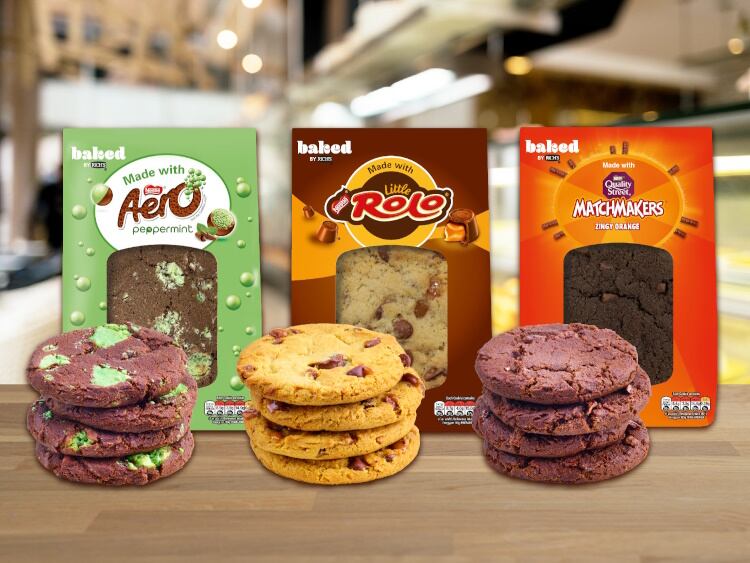The European bakery category – like many others – has undoubtedly been hit by the cost-of-living crisis, altering the consumer’s purchasing and consumption behaviours.
Regulatory changes over the past few years – like HFSS (high in fat, sugar and sodium), Nutri-Score, Natasha’s Law, acrylamide restrictions, mandatory fortification of flour and so forth – have also changed the bakery landscape.
“This all leaves a major question mark around the role of indulgence in the category as people look to save money and focus on health,” said Lin Peterse, category development manager for Bakery at Tate & Lyle.
Thankfully, there’s a but.
“Our consumer insights report – What’s driving growth in the European bakery market – revealed that almost half of young people in Europe are buying bakery products every day, which reveals that there are significant growth opportunities in the bakery sector,” she added.
Today’s savvy consumer is far more focused on a holistic approach to health and how food can help both body and mind.
“Which means there’s an opportunity for manufacturers to review some of their formulations to attract consumers and keep existing customers.”
In collaboration with Coleman Parkes, Tate & Lyle tapped 1,250 European adults (in the UK, France, Germany, Spain and Poland) in late 2022 to find out what was top of mind in shaping their habits when it came to sweet and savoury baked treats.
Peterse expands upon the findings and unpacks the six key attributes that any bakery manufacturer keen to grow their dough in 2024 must consider.
Value for money, better-for-you and great taste

“Our independent survey found low cost was consistently among consumers’ top three considerations when buying baked goods, including bread, cereals, cakes, biscuits and bars.
“We discovered that instore promotions ranked as the biggest influence on buying decisions in the UK when it comes to bakery products, ahead of adverts and recommendations from friends and family.”
However, she added that even though times are tight, shoppers aren’t willing to sacrifice taste, which remains their most important purchase driver across all types of products.
Not forgetting taste and low cost, no/low sugar came in as an increasing sought-after attribute – especially when it comes to breakfast cereals and bars.
Again, the but.
When it comes to pastries, cakes and biscuits, consumers ranked indulgence among their top three priorities.
“This is something we’ve considered at Tate & Lyle, working with a number of manufacturers to reformulate their recipes to avoid being categorised as HFSS,” said Peterse, noting the company’s technical toolbox is a great resource to help reformulate to achieve a great taste profile with less sugar, fat or salt.
“Ultimately, bakers’ product ranges must deliver on both value and health, while also providing more premium and indulgent treats.”
Generational differences

The fact that bakery treats plays a different role for different generations strongly came to the fore in the research.
“One striking finding was the younger group – aged 18-34 – see bakery products as an important part of their diet, while older and middle groups – aged 35+ – are more likely to view them as an indulgence,” said Peterse.
“Indeed, 45% of the young younger consumers we surveyed said they bought bakery products every day, while only 33% of older consumers do the same.”
Added nutrition

“Across the board, we’re seeing changes in the way consumers perceive health,” said Peterse.
She added the survey found 67% of European consumers ranked a product boasting an additional health benefit – high in protein, fibre for gut health, packing in antioxidants and so forth – ahead of sugar content (61%) and calories (56%).
Most interestingly – despite the push by many health authorities and governments to lower fat, sugar and sodium content – 65% of young consumers said they would still purchase a product that is high in fat, salt or sugar if it comes with other benefits.
“This suggests that – while fat, sugar and salt content is important – there is a shift towards consumers looking to purchase products that are fortified with additional nutritional benefits.”
Added Peterse, “We’ve certainly seen a boom in better-for-you snacking products that deliver on the positive nutrition claims.
“Protein, energy and nut bars, for instance, are becoming a more popular snacking choice for younger consumers, and we’re expecting this category to continue growing, becoming a mainstream choice for those with active lifestyles, not just a sports nutrition focus.”
“With more options now available, however, it’s becoming more important for manufacturers to ensure products still deliver on taste and quality.”
Which makes any reformulation project a complex balancing act to ensure the product is healthier while maintaining quality. For example, switching out a large quantity of sugar needs the addition of something else to maintain texture and mouthfeel. Adding Tate & Lyle’s soluble fibres can be an effective way to do this, without impacting taste or appearance.
The evolution of clean label

Although less prioritised, clean label remains a big demand – especially among younger consumers.
According to the survey, one in five consumers said clean label claims would encourage them to increase their consumption of bread, croissants and doughnuts, while one in six said it would encourage them to buy more protein, energy or cereal bars.
“Where clean label once centred around the absence of ingredients perceived to be artificial, it has evolved to encompass free from claims and descriptions highlighting natural and sustainable ingredients,” said Peterse.
But this is far easier said than done. Bakery manufacturers often face technical challenges in maintaining the taste, texture and quality of food when revisiting their ingredient list.
“This is where products like our functional clean label starch – which is labelled simply as a starch but functions like a modified food starch – come into play. The line also offers a clean, neutral taste and colour.”
So, a lot to remember when it comes to formulating bakery products, but Peterse believes the market is incredibly dynamic, and there are ample opportunities for bakers to make the most of it.





